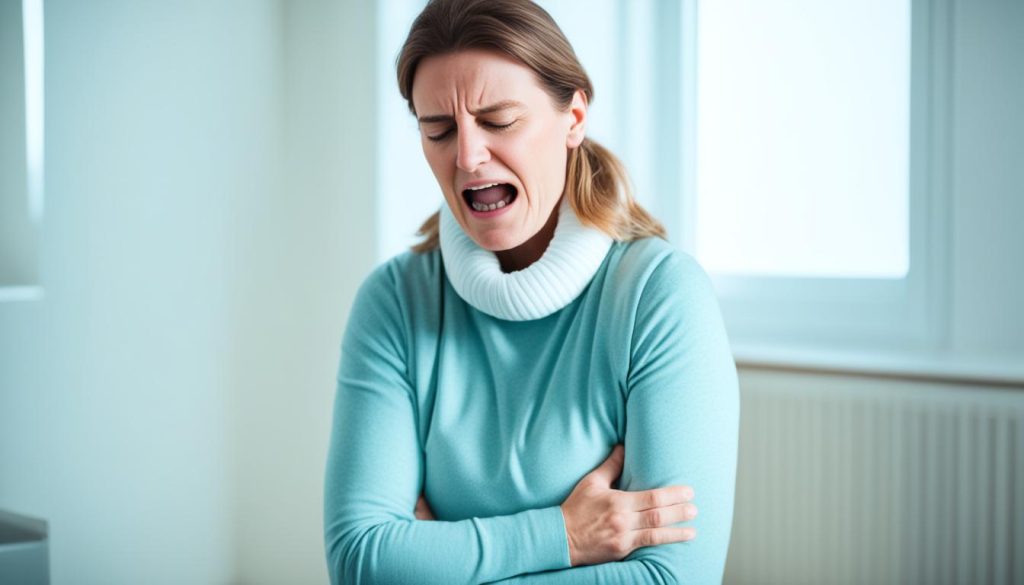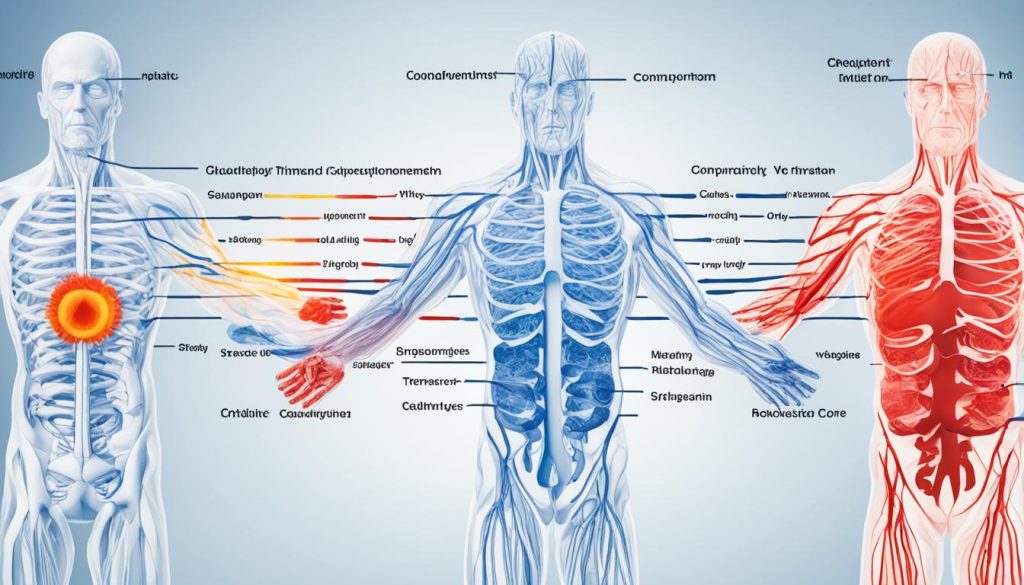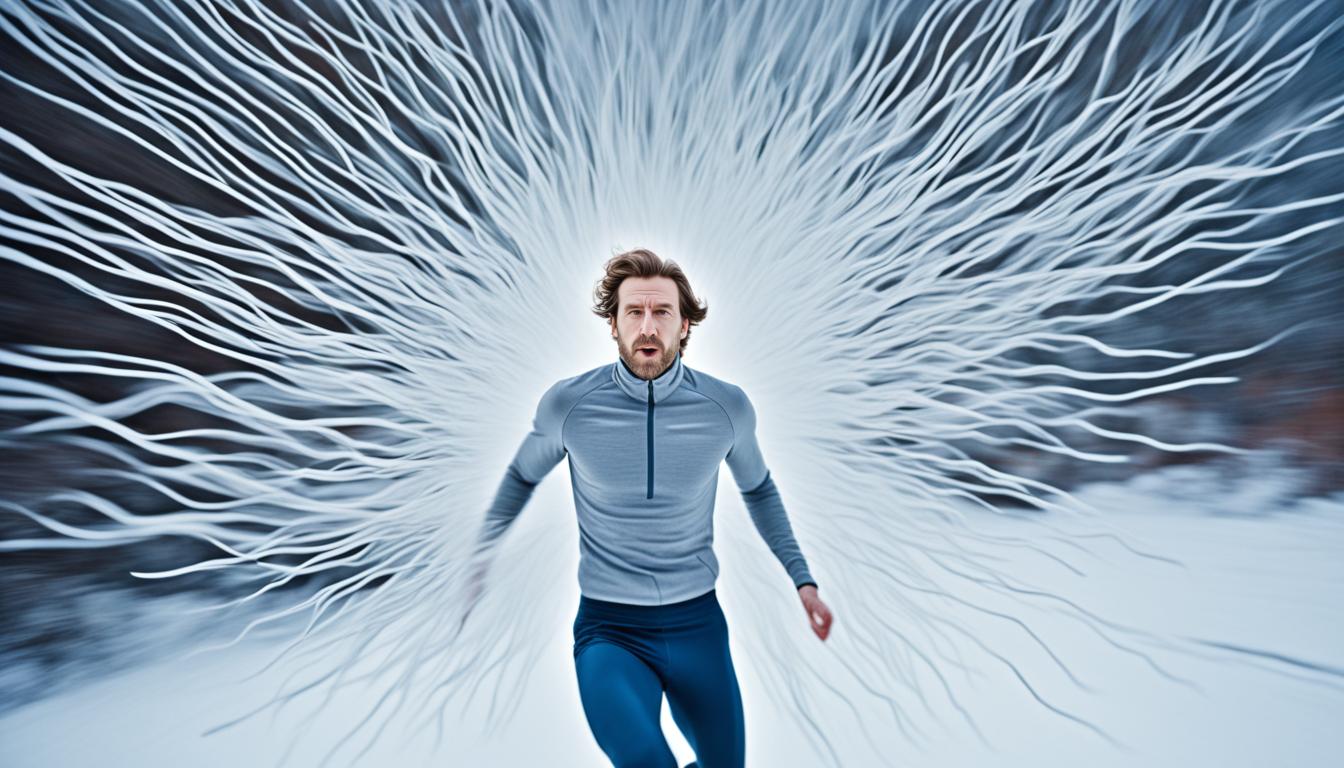Have you ever experienced random shivers that send a sudden chill down your spine, even when you’re not cold or sick? It can be a puzzling sensation, leaving you wondering what exactly is causing these unexplained shivering sensations.
Shivering is typically associated with being cold or having a fever, but it can happen for other reasons as well. Involuntary shivering can be triggered by both physical and mental factors, and it’s important to understand the underlying causes to determine the appropriate course of action.
In this article, we will explore the possible causes of these non-cold shivers and delve into the fascinating world of involuntary shivering. From psychogenic movement disorders to postanesthetic recovery, fear or stress, essential tremor, low blood sugar, anxiety, or even sepsis, there are a variety of factors that can contribute to these mysterious shivering episodes.
So, if you’re curious about why you get random shivers when you’re not cold or sick, keep reading to uncover the secrets behind these involuntary shivering sensations and discover how you can find relief.
Why Do I Get Random Shivers When I’m Not Cold or Sick?
Common Causes of Shivering
Shivering can occur for various reasons, even when you’re not cold or sick. Understanding the common causes of shivering can help shed light on this mysterious phenomenon. Here are some possible explanations:
- Fever: Infections, inflammation, or allergic reactions can cause a rise in body temperature, leading to shivering.
- Psychogenic movement disorders: Stress or underlying mental health issues can trigger involuntary shivering.
- Postanesthetic shivering: When waking up from general anesthesia, a drop in body temperature during surgery can result in shivering.
- Strong emotions: Fear, excitement, or stress can cause shivering due to the release of adrenaline.
- Essential tremor: This neurological condition can cause rhythmic shaking or trembling, including shivering.
- Low blood sugar: Individuals with diabetes may experience shivering when their blood sugar levels drop too low.
- Anxiety: Intense anxiety can manifest in physical symptoms, including shivering.
- Sepsis: This severe response to infection can lead to shivering as the body tries to fight off the infection.

It’s important to note that these are just some of the common causes of shivering. If you’re experiencing unexplained body shivers or shivering without a clear cause, it’s always best to consult a healthcare professional for a proper evaluation and diagnosis.
Treatment and Management
The treatment for shivering depends on the underlying cause. In some cases, addressing the primary issue, such as treating an infection or managing stress, may alleviate the shivering. For chronic conditions like essential tremor or anxiety disorders, various treatment options, including medication and therapy, may provide relief.
Consulting a healthcare professional is crucial in determining the appropriate course of action for shivering without a clear cause. They can help identify any underlying medical conditions or psychological factors contributing to the shivering and recommend an effective treatment plan.
Table: Common Causes of Shivering
| Cause | Description |
|---|---|
| Fever | Can result from infections, inflammation, or allergic reactions, leading to elevated body temperature and shivering. |
| Psychogenic movement disorders | Shivering triggered by stress or underlying mental health issues. |
| Postanesthetic shivering | Occurs after waking up from general anesthesia due to a drop in body temperature during surgery. |
| Strong emotions | Fear, excitement, or stress can cause shivering due to the release of adrenaline. |
| Essential tremor | A neurological condition characterized by rhythmic shaking or trembling, which can include shivering. |
| Low blood sugar | Individuals with diabetes may experience shivering when their blood sugar levels drop too low. |
| Anxiety | Intense anxiety can manifest physically, including shivering. |
| Sepsis | A severe response to infection, which can cause shivering as the body fights off the infection. |
The Relationship Between Shivering and Temperature Regulation
Shivering plays a significant role in the regulation of body temperature. When exposed to cold temperatures, the muscles in the body contract and relax rapidly, generating heat to warm up the body. Shivering is the body’s way of generating heat and maintaining its core temperature.
It can also occur in response to fever, as the body raises its temperature to fight off infections. Shivering is a natural response to the fluctuations in temperature and is usually temporary, stopping once the body warms up.

Understanding the relationship between shivering and temperature regulation is vital for overall health and well-being. By stimulating muscle contractions, shivering ensures that the body stays warm in cold temperatures and helps combat fever during infections.
In the next section, we will explore the role of cognition and emotional responses in shivering and how they contribute to this fascinating bodily phenomenon.
The Role of Cognition and Emotional Responses in Shivering
Shivering, an involuntary movement of the body, can be influenced by cognition and emotional responses. Intense emotional reactions and experiences of aesthetic emotions, like listening to music or watching a film, can trigger shivers or chills. These emotional responses are believed to stem from the body’s exploration and perception of the world. Additionally, moments of intense cognitive activity, such as solving complex mathematical problems, have been associated with shivering.
In particular, psychogenic shivers are thought to be linked to the measure of similarity between sensory signals and mental models. When these similarities reach a peak value, it can result in a turning point in learning and knowledge. This suggests that shivering may play a role in cognitive processes and the formation of new connections in the brain.
To better understand the connection between cognition, emotions, and shivering, further research is needed. By exploring this relationship, we can gain insights into the intricate workings of the human mind and the physiological responses it elicits.

Emotional Responses and Aesthetic Emotions
- Intense emotional reactions can trigger shivering
- Aesthetic emotions, like listening to music or watching a film, can also lead to shivers or chills
- Shivering in response to emotions is related to the body’s exploration and perception of the world
Cognition and Shivering
- Intense cognitive activity, such as solving complex mathematical problems, can cause shivering
- Shivering during cognitive processes suggests a possible role in learning and knowledge formation
- Possible connection between shivering and the measure of similarity between sensory signals and mental models
Other Factors That Can Cause Chills Without Fever
In addition to the previously mentioned causes, there are several other factors that can result in chills without fever. These factors include:
- Exposure to Cold: Being in chilly environments or swimming in cold water can lead to chills.
- Medication Side Effects: Certain medications or incorrect dosages can cause chills as a side effect.
- Extreme Physical Activity: Engaging in intense physical activities such as marathon running can induce chills, along with symptoms like goosebumps, muscle cramping, and fatigue.
- Hypothyroidism: An underactive thyroid can disrupt the body’s temperature regulation, leading to chills.
- Hypoglycemia: Low blood sugar levels, often seen in individuals with diabetes, can trigger chills.
- Malnutrition: Lack of proper nutrition can negatively impact the body’s ability to regulate temperature and result in chills.
- Emotional Reaction: Intense emotional responses can sometimes manifest as chills.
It’s important to be aware of these additional factors as they can contribute to chills without the presence of a fever. Understanding the underlying cause can help in managing and addressing the symptoms effectively.

| Causes of Chills Without Fever | Symptoms |
|---|---|
| Exposure to Cold | Chilly environment, swimming in cold water |
| Medication Side Effects | Chills as a side effect of certain medications or incorrect dosages |
| Extreme Physical Activity | Marathon running, goosebumps, muscle cramping, fatigue |
| Hypothyroidism | Underactive thyroid affecting temperature regulation |
| Hypoglycemia | Low blood sugar levels, common in diabetes |
| Malnutrition | Poor nutrition impacting temperature regulation |
| Emotional Reaction | Intense emotional responses resulting in chills |
When to Be Concerned About Chills Without Fever?
While experiencing chills without fever may often be harmless, there are certain situations where it is important to seek medical attention. It is crucial to be aware of potential signs and symptoms that may indicate a more serious underlying condition. Here are some scenarios where you should consider consulting a healthcare professional:
- If chills occur after exposure to extreme cold and are accompanied by symptoms such as numbness, changes in skin color, or confusion, it could indicate the development of hypothermia or frostbite.
- If you suspect that chills are a result of medication side effects, it is important to inform a doctor or pharmacist immediately.
- In cases where underlying conditions like hypothyroidism, hypoglycemia, or malnutrition may be causing the chills, it is essential to seek medical support and treatment.
If you are unsure or concerned about your symptoms, it is always best to consult a healthcare professional. They can assess your condition, provide appropriate guidance, and recommend further investigations if necessary.
Important Note
If you experience any emergency symptoms such as severe chills, difficulty breathing, chest pain, or loss of consciousness, seek immediate medical attention.
| Potential Causes | When to Be Concerned |
|---|---|
| Hypothermia or Frostbite | If chills occur after exposure to extreme cold and are accompanied by symptoms such as numbness, changes in skin color, or confusion. |
| Medication Side Effects | If you suspect that chills are a result of medication side effects, it is important to inform a doctor or pharmacist immediately. |
| Hypothyroidism, Hypoglycemia, Malnutrition | In cases where underlying conditions like hypothyroidism, hypoglycemia, or malnutrition may be causing the chills, it is essential to seek medical support and treatment. |
Conclusion
Shivering is a common phenomenon that can occur for various reasons, such as fever, exposure to cold, stress, and emotional responses. While most cases of shivering are temporary and harmless, it is important to understand the underlying causes and seek medical advice if necessary.
The regulation of body temperature is a complex process that involves the contraction and relaxation of muscles to generate heat. Shivering helps the body maintain its core temperature and can also occur in response to fever, as the body fights off infections.
Cognition and emotions also play a role in shivering. Intense cognitive activity and emotional responses can trigger shivers, which have been linked to the body’s exploration and perception of the world. However, further research is needed to fully understand these processes.
If you experience unexplained or persistent shivering, it is recommended to seek medical advice. A healthcare professional can help identify the specific cause of your shivering and provide appropriate treatment options. Remember, understanding the underlying cause is essential for effective management and ensuring your well-being.




